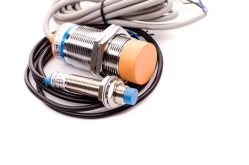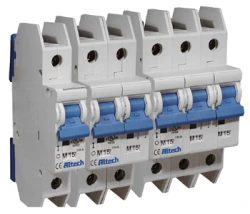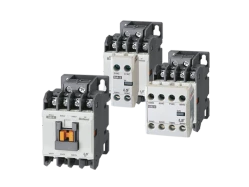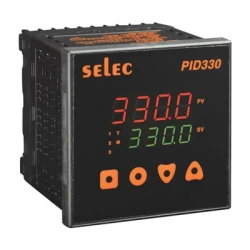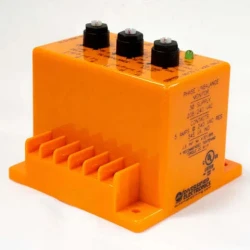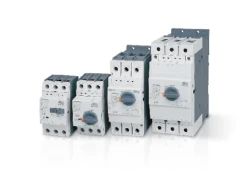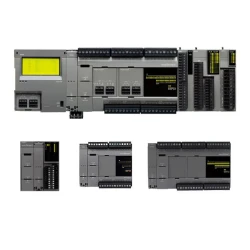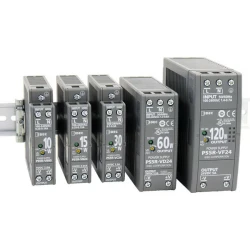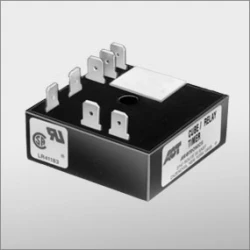Controls & Sensors
At Control Design Supply we have a wide selection of controls and sensors to make sure your projects run as smoothly and efficiently as possible. Shop our selection below. Contact us today with any questions or for more information.
Electrical Controls for Automated Systems
Controls refer to the systems, devices, or software that manage the operation of machinery, processes, or electrical systems. Control systems are essential for regulating the behavior of machines and processes according to predefined parameters or real-time data.Electronic Control Devices and Components We Supply:
- Programmable Logic Controllers (PLCs): PLCs are specialized computers used for automation. They can control machines, processes, and entire systems. PLCs execute control logic based on inputs from sensors and provide outputs to control actuators.
- Human-Machine Interfaces (HMIs): HMIs provide the interface through which operators interact with the control system, monitor performance, and make adjustments to system parameters.
- Control Valves: These valves regulate the flow of liquids, gases, or other materials in a process. They can be adjusted automatically based on control signals or manually by operators.
- Motors and Drives: Motors and drives convert electrical signals from the control system into mechanical movement. Drives are used to control the speed, torque, and direction of the motor.
- Controllers (PID Controllers): PID (Proportional-Integral-Derivative) controllers are widely used for continuous control in industrial processes. They adjust control outputs by calculating the error between a desired setpoint and the current value.
Applications of Electrical Control Systems:
- Manufacturing: Automation of assembly lines, material handling, and packaging.
- Energy: Power grid management, wind turbines, and solar power control.
- Transportation: Traffic management, autonomous vehicles, and railway signaling.
- HVAC Systems: Temperature, humidity, and air quality regulation.
Sensors for Automation
Sensors are devices that detect and measure physical or environmental changes and convert these measurements into electrical signals for further processing. Sensors are essential in both control systems and automation, as they provide real-time data to monitor conditions and make adjustments accordingly.Types of Sensors We Distribute:
- Temperature Sensors:
- Thermocouples: Measure temperature by detecting changes in voltage across two different metals. They can withstand very high temperatures.
- RTDs (Resistance Temperature Detectors): Measure temperature based on the change in resistance of a material (usually platinum) with temperature.
- Thermistors: A type of temperature sensor made from ceramic materials, their resistance changes with temperature.
- Pressure Sensors:
- Piezoelectric Pressure Sensors: These sensors generate an electrical charge when subjected to pressure. Commonly used in automotive and industrial applications.
- Strain Gauge Pressure Sensors: These sensors detect pressure changes by measuring the deformation of a material.
- Proximity Sensors:
- Used to detect the presence or absence of an object without direct contact. Types include capacitive, inductive, and ultrasonic proximity sensors.
- Common in assembly lines, robotics, and material handling systems.
- Flow Sensors:
- Electromagnetic Flow Meters: These measure the flow rate of liquids and gases based on the electromagnetic properties of the material.
- Turbine Flow Sensors: These detect the rotational movement of a turbine in the fluid path to measure flow rate.
- Level Sensors:
- Capacitive Level Sensors: Detect the level of a liquid or solid by measuring changes in capacitance between two electrodes.
- Ultrasonic Level Sensors: Measure the distance to the surface of a material using ultrasonic sound waves.
- Radar Level Sensors: Use microwave signals to detect the level of liquids or solids.
- Position Sensors:
- These sensors measure the position of an object in motion and include devices like linear encoders, rotary encoders, and potentiometers.
- Hall Effect Sensors: Detect changes in magnetic fields and are used for precise position tracking in rotating machinery.
- Humidity Sensors:
- Capacitive Humidity Sensors: Measure relative humidity by detecting changes in capacitance between two electrodes as moisture levels change.
- Resistive Humidity Sensors: These change their resistance based on the moisture content in the air.
- Gas Sensors:
- Measure the concentration of gases like oxygen, carbon dioxide, and toxic gases. Often used in industrial environments for safety and environmental monitoring.
- Light Sensors:
- Photodiodes and Phototransistors: Measure light intensity. Commonly used in applications where light exposure needs to be monitored or controlled.
- LDR (Light Dependent Resistors): Change their resistance based on the amount of light falling on them.
Common Sensor Applications Include:
- Manufacturing: Monitoring machine health, temperature, pressure, flow, and vibration in industrial equipment.
- Automotive: Engine control, airbag systems, and tire pressure monitoring.
- Aerospace: Flight control systems, engine monitoring, and weather monitoring.
- Environmental Monitoring: Measuring air quality, pollution levels, and weather conditions.
- Home Automation: Smart thermostats, lighting control, and motion detection.
How Controls and Sensors Work Together
Control devices and sensors work together to create fully automated systems that improve efficiency and safety. For example:
- In Feedback Loops, sensors continuously monitor real-time conditions (e.g., temperature, pressure), and the data they provide is sent to the control system. The control system then uses that data to adjust outputs, such as regulating a heating element or controlling the speed of a motor.
- Automation depends on sensors to detect events (e.g., object presence, temperature changes) for the control system to automatically adjust operations based on those inputs. This is the basis for much of the industrial automation that improves efficiency and reduces the need for human intervention.
- Safety Systems rely on sensors like smoke detectors, gas leak sensors, and pressure sensors, in combination with control systems, to help ensure that machinery and systems are operating safely and prevent accidents or failures.
Order Your Controls and Sensors from CDS Today!
With over five decades of industry experience, we are a trusted and leading supplier of electronic components. Our large inventory of electrical products is designed to provide solutions for every industry. In addition to top-quality electrical components, we offer comprehensive kitting, assembly, and customization services to meet your exact needs. No matter your project or specifications, you can find the right solution at CDS.Contact us to learn more about our products and services and speak with a knowledgeable team member. Request a quote to get started on your order today.


